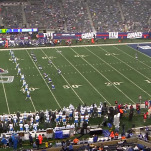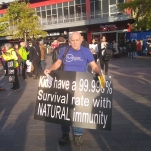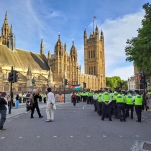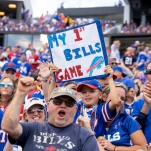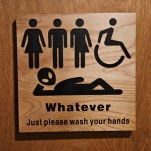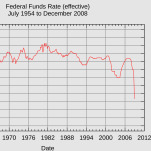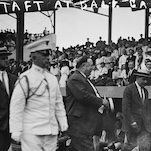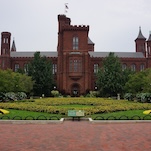Nextdoor, the social network for neighbors, is becoming a home for racial profiling
As Meredith Ahlberg ushered friends into her home in East Oakland’s Ivy Hill neighborhood for a party on a Saturday in early March, she noticed that her phone was lighting up with notifications. There were new messages from agitated neighbors on the localized social network Nextdoor, warning the neighborhood about “sketchy” men—one in a “white hoodie,” the other “a thin, youngish African American guy wearing a black beanie, white t-shirt with dark opened button down shirt over it, dark pants, tan shoes, gold chain.” These men, the poster wrote, were “lingering” and searching for a nonexistent address.
“Scary sketchy,” a poster commented. One neighbor suggested the situation warranted a call to the Oakland Police Department.
But Ahlberg, who is white, recognized the “suspicious” men: they were her friends, looking for her front door. By the time she saw the posts, her friends had found the correct address and Ahlberg was looking right at the ‘thin, young, black man’ with the gold chain. The co-owner of a clothing store in downtown Oakland, he looked “ridiculously handsome and stylish,” she said in an interview. She was horrified at her neighbors’ assumptions.
“They were friends of mine,” she wrote in a response to the Nextdoor post, explaining how she accidentally gave them the wrong address in a party invitation. “Not sketchy at all. Really great men and wonderful folks, just lost,” she added. “That’s a relief,” one neighbor wrote.
While Nextdoor’s ability to assist in crime-spotting has been celebrated as its “killer feature” by tech pundits, the app is also facilitating some of the same racial profiling we see playing out in cities across the country. Rather than bridging gaps between neighbors, Nextdoor can become a forum for paranoid racialism—the equivalent of the nosy Neighborhood Watch appointee in a gated community.
Ahlberg is an East Coast native who moved to Oakland three years ago; Ivy Hill, where she lives, is what real estate agents call a “transitioning” neighborhood. She appreciates the information-sharing benefits of Nextdoor, but is concerned about the racial profiling that happens there. Since signing up for the app in 2012, Ahlberg has repeatedly seen black people in the neighborhood described as “suspicious” characters. “The most agitated alert messages are, by far, in reference to young black men who are seen as dangerous or a possible threat,” she said.
The same week of Ahlberg’s party, the New York Times wrote about Nextdoor’s venture capital-fueled growth, and its attempts to get community leaders onto its platform. It recounted the usual company lore about Nextdoor’s explosive growth over the last four years, leading to the creation of 53,000 micro-communities in the U.S. with users now sending 5 million messages a day. Like most media coverage of Nextdoor, the Times story didn’t mention the tense racial conversations that often play out there, and sometimes spill outside the app’s walled garden onto the open Internet.
“Racism quietly flourishes in San Leandro,” wrote one blogger citing Nextdoor posts in another Oakland neighborhood. A woman in St. Louis blogged about Nextdoor becoming the leaping off point for a discussion of how black mothers raise their sons. “Nextdoor: In case your Facebook feed isn’t racist enough,” is how a woman in Wisconsin titled a Tumblr post about the discomforting posts she saw on the network.
I signed up for Nextdoor last month to get a read on the type of conversations that happen there. I chose a North Oakland neighborhood where I spent time growing up. It’s a racially-mixed community of retired black people, younger white artists, and quite a few teachers—not a perfectly safe neighborhood, exactly, but another rapidly gentrifying Oakland enclave. The posters there also seemed to see skin color as a reason for suspicion.
-

-

-

-

-

-

-

-

-

-

-

-

-

-

-

-

-

-

-

-

-

-

-

-

-

-

-

-

-

-

-

-

-

-

-

-

-

-

-

-

-

-

-

-

-

-

-

-

-

-

-

-

-

-

-

-

-

-

-

-

-

-

-

-

-

-

-

-

-

-

-

-

-

-

-

-

-

-

-

-

-

-

-

-

-

-

-

-

-

-

-

-

-

-

-

-

-

-

-

-

-

-

-

-

-

-

-

-














